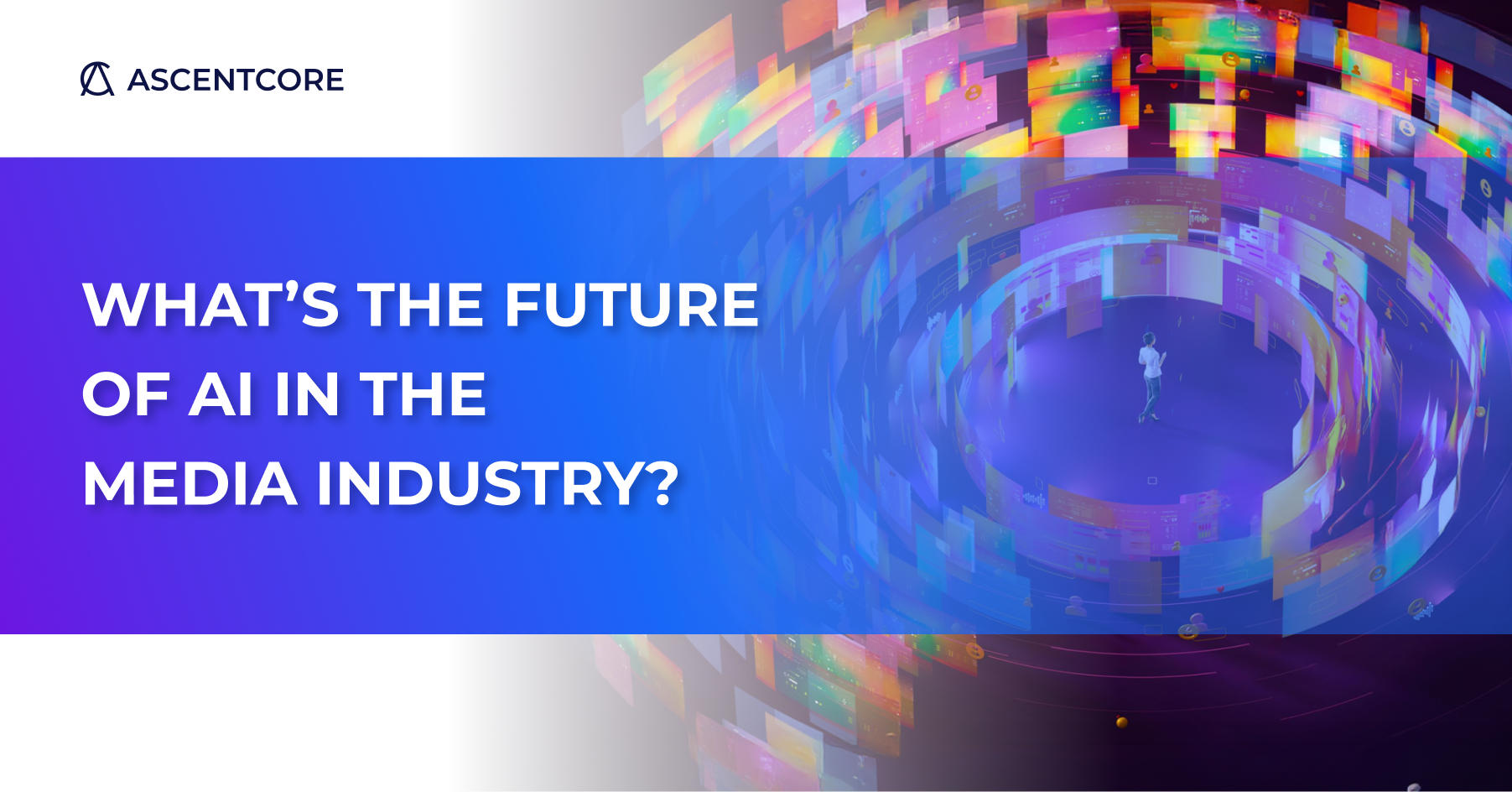Artificial intelligence (AI) is no longer a buzzword, it’s a transformative force reshaping the media landscape. In the podcast “AI & Media: A C-Level Playbook,” Jonathan Rivers, a media technology executive, and Cornel Stefanache, CTO at AscentCore, unpack AI’s dual nature: a tool that promises unprecedented opportunities for creativity and efficiency, yet one that carries significant risks, such as disinformation.
For media leaders, the path forward involves embracing AI’s potential while proactively managing its challenges. This article dives into the opportunities AI offers, the risks it poses, and the steps media companies must take to thrive in this evolving era.
Empowering Creativity with AI
Jonathan Rivers is skeptical about AI replacing journalists: “I don’t believe that it is full content creation, I don’t fundamentally think the technologies are there,” he says. Instead, he views AI as a catalyst for human creativity, comparing its impact to the shift from pen to word processor. “This is a set of technology that unlocks creativity, that removes barriers to entry, to burdens, to content creation,” Jonathan explains.
By automating routine tasks such as drafting outlines, summarizing research, or generating metadata, AI frees journalists to focus on high-value work like investigative reporting or narrative storytelling. For example, an AI tool could quickly produce a draft article based on raw data, which a journalist then refines for tone and accuracy. This collaboration accelerates workflows, lowers production barriers, and enables smaller teams to compete with larger outlets. As AI matures, it could further democratize content creation, empowering new voices and innovative formats in the media landscape.
Revolutionizing Content Distribution
“The future of media lies in syndication and distribution. You need to get your content out as far and wide to your audience as possible, and once you reach that scale, understanding what happened with it is really where AI is going to come in,” said Jonathan.
AI’s ability to analyze vast datasets allows media companies to optimize content delivery across platforms, tailoring it to audience preferences and maximizing engagement. Imagine an AI system that tracks performance metrics across social media, websites, and newsletters, identifying which stories resonate on specific channels or with certain demographics. It could recommend posting schedules, suggest video snippets for TikTok, or prioritize long-form articles for subscription platforms. “It allows you to sift vastly larger sets of data than you could as a human, and it unlocks new possibilities,” Jonathan notes. This data-driven approach transforms distribution from a logistical challenge into a strategic advantage, boosting both reach and revenue.
Confronting the Risk of Disinformation
While AI’s opportunities are vast, its risks are equally pressing. Cornel Stefanache warns, “The big problem is that AI is just a tool that enables bad actors to generate bad content.” With AI capable of creating convincing text, images, or deepfakes, disinformation could proliferate, eroding trust in the media. This highlights a critical concern: AI’s integration with social platforms could amplify misleading content at an unprecedented scale.
To counter this, Stefanache sees a “huge race” to develop AI tools that filter out disinformation. “Whoever is able to create that AI that will filter out the bad content” will lead the industry, he says. Media companies must invest in technologies that detect manipulated content, verify sources, or flag inaccuracies ensuring their output remains trustworthy in an era of skepticism.
A Roadmap for Responsible AI Adoption
The future of AI in the media industry demands proactive leadership. Executives must act swiftly but thoughtfully, balancing innovation with ethical considerations.
Here’s how:
- Start with Pilots: Experiment with AI in low-risk areas, like content tagging or audience analytics, to build confidence and identify high-impact use cases.
- Prioritize Ethical Frameworks: Develop policies to ensure AI outputs align with journalistic standards, including mechanisms to combat disinformation.
- Leverage Partnerships: Collaborate with AI specialists, like AscentCore, to access pre-built tools and expertise, avoiding costly in-house development. Rivers advises, “You are just better off partnering now until it gets democratized.”
- Invest in Distribution: Use AI to optimize content syndication, analyzing data to deliver the right content to the right audience at the right time.
Ready to see AI in action?
Visit our dedicated Media page and discover how AI can maximize your media revenue through AI and our core expertise.



